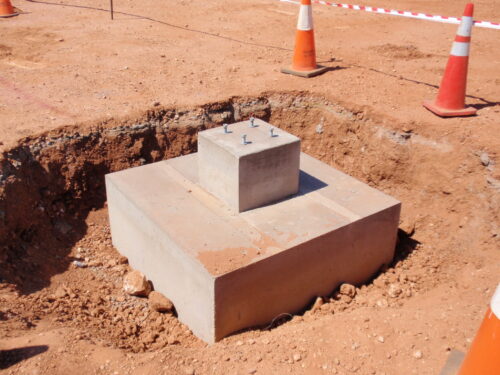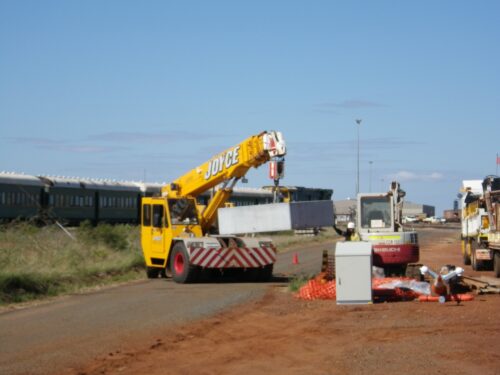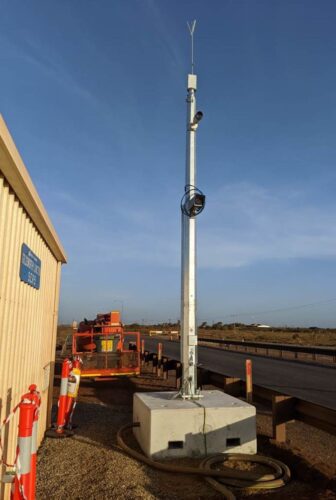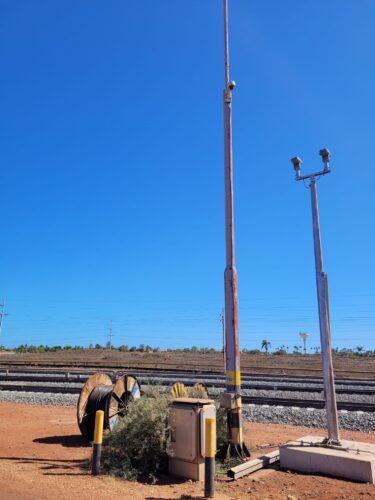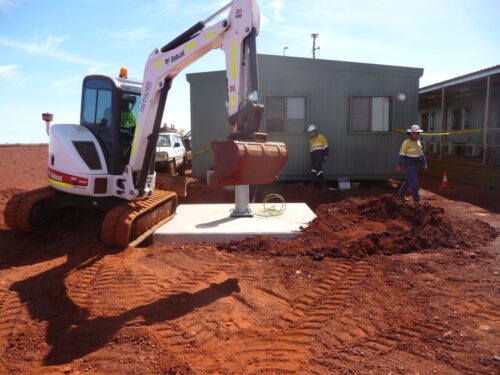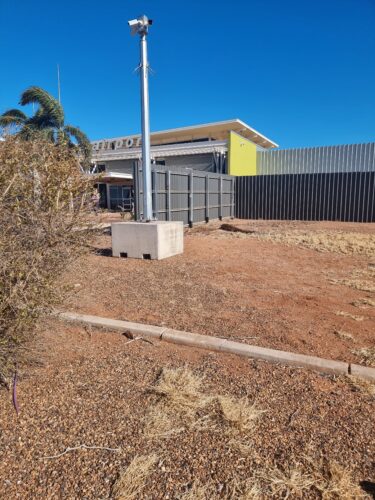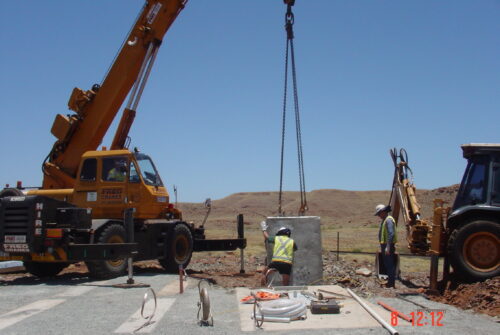Choosing The Right Footing For Your Site Conditions
Where the soil at your pole installation site contains rock or is too firm to use an auger for a pile footing, or where the site has a high water table, a slab/pad/raft type footing is recommended. This type of concrete pole base requires a considerably larger quantity of reinforced concrete and shrinkage steel reinforcing. This type of footing design is based on mass weight to anchor the pole with a concrete base in situ. It must be constructed on a level, well-compacted site to minimise the risk of subsidence and overturning.
In circumstances where it is difficult or expensive to obtain concrete, or where a mobile footing is preferred, this type of footing can be supplied as precast concrete bases. These foundations are cast in a steel mould and come complete with 4 x Swift Lift crane lifting points and provision for forklift access. These precast products come complete with electrical conduits installed and provision for pole holding down bolts to mount the pole.
Custom Design
We can manufacture a standard range of precast concrete bases to mount our poles to, however they can be custom-designed and manufactured to other sizes to suit your particular application if practical. Our engineered solutions accommodate specific needs for various projects, ensuring each product delivers optimal stability and reliability for your equipment.
Australian Standards
All precast concrete bases are engineered and manufactured according to Australian Standards to take a maximum wind loading in the particular geographical location. Based on the effective wind loading of your equipment and the particular pole model that you require, our team at G&S Industries will specify a precast concrete base. This ensures your project meets all safety requirements while providing long-term value and longevity.
The key benefits of choosing precast solutions include efficient installation, low maintenance requirements, and the ability to provide consistent quality across multiple projects. These precast concrete blocks are ideal for various environments and can be supplied in a range of standard sizes or custom configurations.
Whether you need concrete light pole bases for lighting applications, solar installations, or other industry equipment, our team is happy to work with you to ensure your order meets your specific requirements. Contact us for a quote and let us help make your next project a success.

